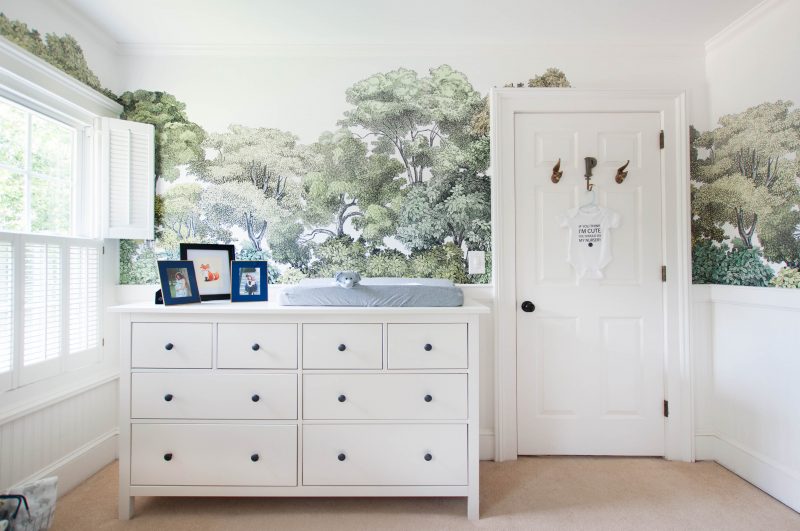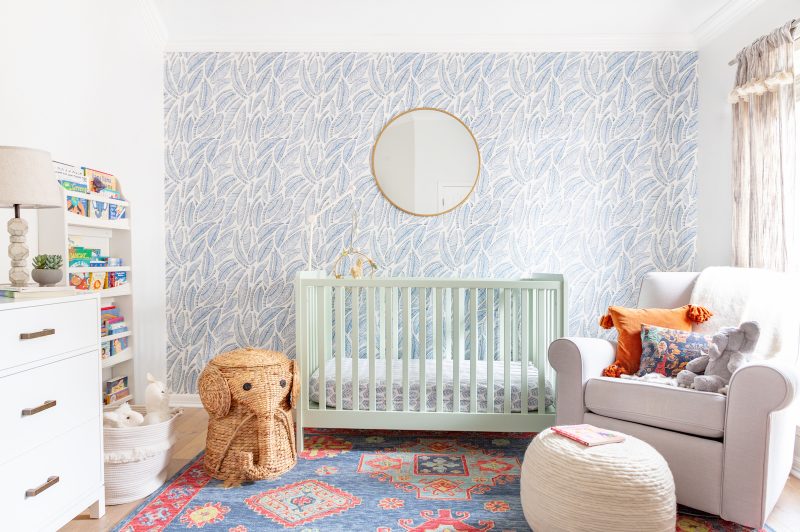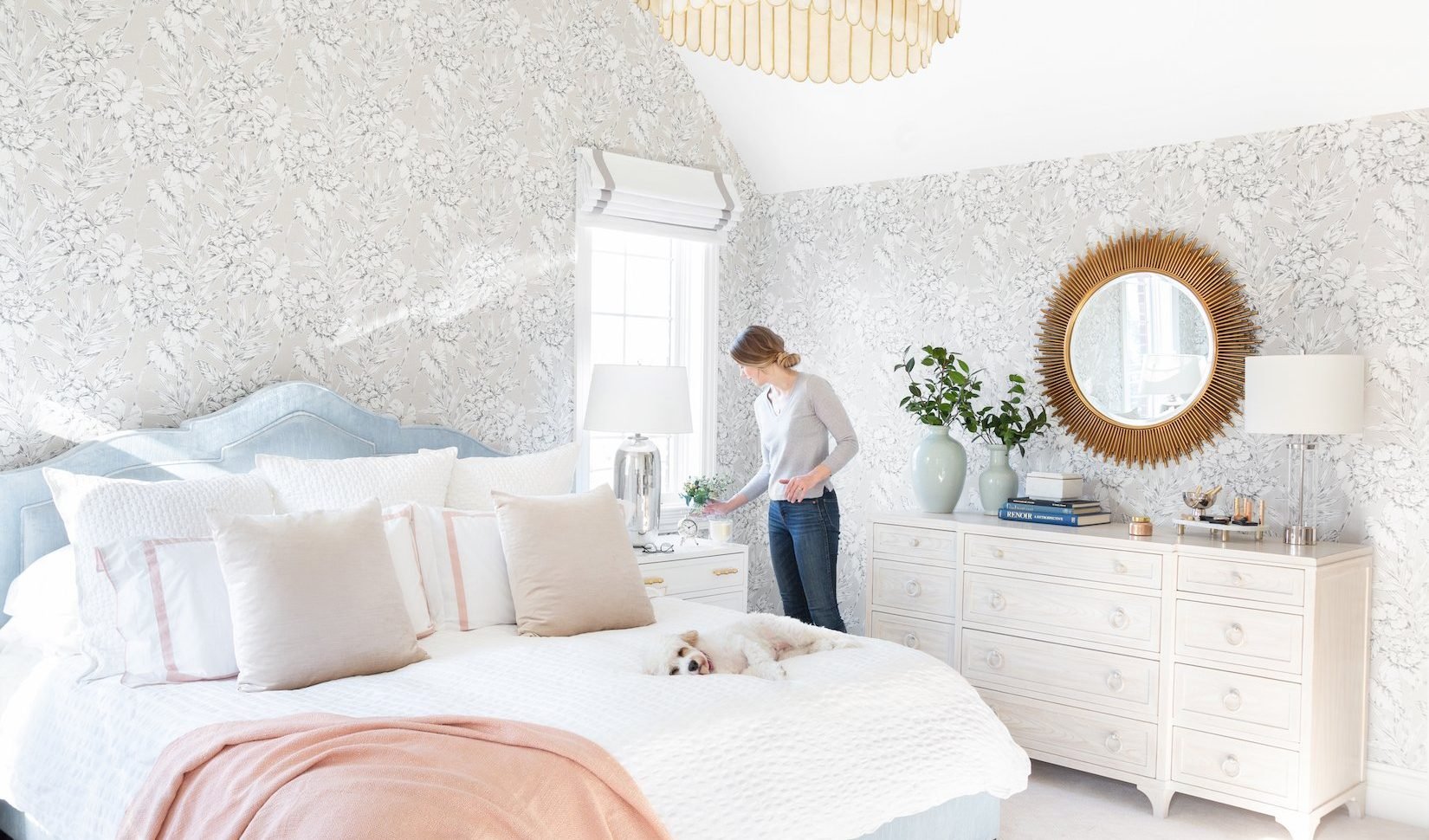Once upon a time, applying wallpaper led the list of DIY Tasks Most Likely to Lead to Divorce. Removing wallpaper was a close second.
The boom in peel-and-stick wallpaper changed all that. Goodbye, wallpaper tray, paste brush and the need to call an expensive professional paperhanger (or divorce lawyer).
Hello, quick application and easy removal—no experience necessary.
“It’s so easy to remove and reposition peel and stick wallpaper if you make a mistake or change your mind about the placement,” says Robyn Pleggenhule, an interior designer with Havenly. “And it’s a great option if you’re renting, and the generic ‘builder beige’ paint is getting tiresome.”
Hold onto your smoothing tool and stepladder while Robyn shares a few tips on peel and stick wallpaper, which you can find at most home-improvement stores and many online retailers.

Peel and stick wallpaper loves smooth walls. Stick with paint on rough surfaces or in baths with poor ventilation.
You needn’t commit to papering an entire room or even an entire accent wall. “If you want to try wallpaper but are a little intimidated, try papering only the upper or lower half of your wall (wainscot-style),” Robyn says.
Peel and stick wallpaper isn’t just for walls, either: You can use it to prettify a set of drawers or stairs, frame it for a piece of abstract art, or adhere it to a lacquer tray for a new look.
Or paper the back wall of a bookcase or set of built-ins to juice otherwise boring shelves. Robyn’s pro tip: “Mount the paper to foam core for easy removal or seasonal refreshment. You can even paper both sides for an instant, impactful change.”

From bricks to Bauhaus-inspired cubes, from traditional toile to trellises in contemporary colors, peel and stick wallpaper provides an embarrassment of choices.
The pattern you choose depends on the vibe you want to create, Robyn says.
For an energetic feeling, reach for medium- or large-scale geometric patterns in bold colors. For a calm yet sophisticated atmosphere, opt for a light neutral or tone-on-tone textured paper. Or for a romantic setting, pick florals or an abstract watercolor.
You could even use peel and stick wallpaper “to refresh your home seasonally or set the mood for special occasions or themed parties,” Robyn says. Immerse your birthday boy or girl in the world of Harry Potter, for example, with this peel and stick wallpaper.
Whatever you do, buy the best quality wallpaper you can afford. It’ll adhere to the wall better, come off easier and look nicer over the long haul.

You’ll need a few tools for this project: a stepladder, a smoothing tool, a tape measure, a utility knife, a screwdriver and another set of hands.
Unroll the wallpaper and let it lie until it’s flat. You can speed the process by anchoring it with books, but be careful not to crease it.
Move furniture that’s in your way, remove switchplates and outlet covers, dust and clean your walls and patch any holes.
Measure your walls, then cut wallpaper panels a few inches larger than you’ll need.
Start applying in a top corner of the wall by peeling the backing away from the top section of wallpaper. Once you’ve got everything aligned, peel the backing away a couple of feet at a time and stick your paper to the wall, using a smoothing tool as you go.
Repeat the hanging process, making sure that you match the pattern in each panel.
Remove excess paper by using your knife along the ceiling, baseboards and electrical plates. Just be careful not to scratch your walls with your knife.

The removal process couldn’t be easier. Grab a corner by the ceiling and pull slowly toward the floor, not out from the wall.
You can save removable wallpaper to use again (just remember to hold on to the paper backing when you’re hanging the paper).
But with so many patterns to choose from, why not try something new?
Take Havenly’s style quiz, select your favorite spaces, and we’ll point you toward your perfect interior design style.

